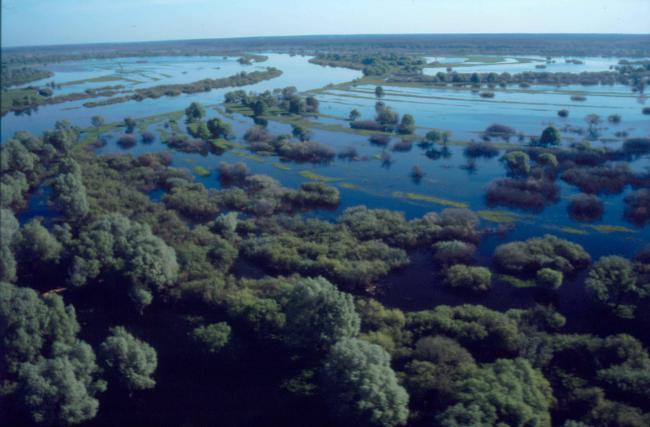Dnieper River Floodplain
Dnieper River Floodplain
- Country:
- Belarus
- Site number:
- 2244
- Area:
- 29,352.9 ha
- Designation date:
- 29-05-2014
- Coordinates:
- 51°38'17"N 30°36'31"E
Carousel
CarouselMaterials presented on this website, particularly maps and territorial information, are as-is and as-available based on available data and do not imply the expression of any opinion whatsoever on the part of the Secretariat of the Ramsar Convention concerning the legal status of any country, territory, city or area, or of its authorities, or concerning the delimitation of its frontiers or boundaries.
The Dnieper River Floodplain is a large natural wetland complex consisting predominantly of intermittent freshwater marshes as well as forested and non-forested peatlands, freshwater tree-dominated wetlands and shrub-dominated wetlands. It is one of the last large river floodplains in Europe to be preserved in its natural state. Located along the border with Ukraine, the Site encompasses about 100 km of the river, drainage canals, oxbow lakes and temporary ponds on the Belarus side. The wetland plays a significant role in the natural functioning of the river basin and its underground hydrological systems. It supports the globally threatened lesser white-fronted goose (Anser erythropus) as well as nationally threatened plant and animal species. It is one of the most important breeding habitats in Belarus of waterfowl including corn crake (Crex crex), and the floodplain meadows serve as spring migration stopovers for many waterfowl, including ruff (Philomachus pugnax) and Terek sandpiper (Xenus cinereus). The temporarily flooded water bodies are critical spawning grounds for rare indigenous fish, notably Acipenser ruthenus. The Site is used for gathering berries and mushrooms and for recreational fishing and hunting, and it includes numerous important historical and archaeological sites. The main threats relate to pollution by urban waste water, spring burning of vegetation in the floodplains and overgrowing of mires and open meadows with shrubs. The land and water in the Site are affected by radioactive contamination due to the 1986 accident at the Chernobyl nuclear power plant.
Administrative region:
Bragin and Loev district/Gomel region
Last publication date:
29-10-2015
Ramsar Information Sheet (RIS)
